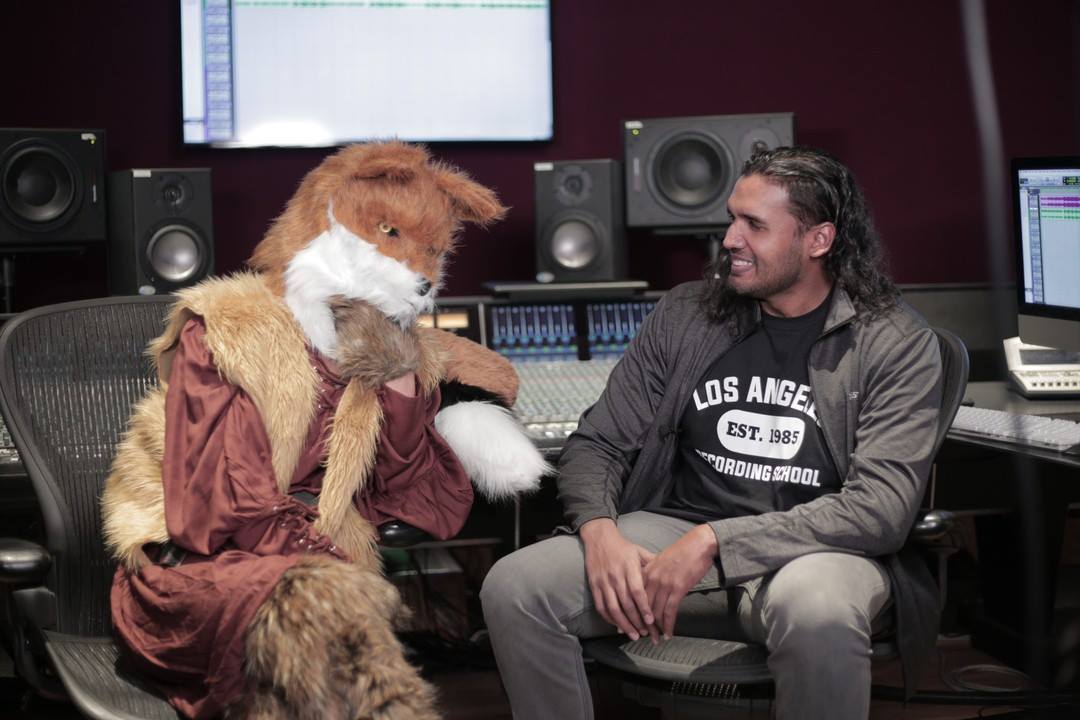The Masked Singer at The L.A. Recording School

Julie Chang from Good Day LA dressed up as a fox and sang “Havana” in our recording studios.
So when Good Day LA approached our school to do its version of The Masked Singer, we welcomed their crew into our recording studios at The Los Angeles Recording School. Entertainment anchor Julie Chang braved the extremely furry fox costume and volunteered to sing for the segment.
We enlisted the help of one of our audio instructors, Nav Ramasamy, and vocal coach, Sofia Lyons, to refine Julie’s rendition of Camila Cabello’s hit single Havana. With just over three hours in the recording studios, Nav went to work tuning her vocals on the SSL Duality console and in Pro Tools.
How to Make an Okay-Singer Sound Like a Pro According to Audio Instructor Nav Ramasamy
The three audio engineering techniques Nav suggests recording artists use:
Tuning
The first is tuning. There are two variants, the first being the more precise method of tuning that is manual tuning using a program such as Melodyne or Auto-Tune’s Graphical Mode. The second variant is Automatic tuning, which uses the real-time modes of either Auto-Tune or Waves Tune, etc. In both cases, the goal is to put the artist’s performance on the right notes (in key), fix anything that sounds flat or sharp, and make sure that the intonation is good. In cases where you want it to sound as natural as possible, automatic tuning is not the go-to option. In situations where you aren’t too worried about how natural it sounds or when we want to deliberately hear the sound of tuning, you use the auto modes.
Timing
The second is timing. Similar to tuning, you also need to make sure that the artist’s performance is timed correctly. Usually, there will be a few notes here and there where the artist either anticipates and comes in early or is a little late. These errors are especially noticeable on downbeats and upbeats of highly rhythmic phrases. This is where the engineer goes in and times the vocals. You can either time it by manually cutting and moving the vocal, or by using a program like ReVoice Pro or VocAlign Pro to align backing vocals to the timing of a lead performance. As with tuning, the manual method of timing typically produces the cleaner, more transparent result.
Effects
The third is effects. Audio effects are split into two categories, gain-based (compression/eq/gates, etc.) and time-based (reverbs/delays/chorus, etc.). The best workflow is to get the gain-based processing done before diving into time-based processing. Think of it like baking a cake. Tuning and timing would be the process of making sure the ingredients are perfect, gain-based effects are the process of molding the cake and making sure it bakes at the right temperature and length, and time-based effects are the icing.
The end result? Watch the video below to see how Nav worked his sound magic to enhance Julie’s voice.



